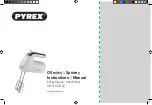
212
Appendix
Appendix
filter is used as the wet signal. In this case,
the damp filter is applied only to the delay
feedback.
POST DAMP: Takes the wet sound from after the damp
filter.
the signal after passing through the damp
filter is used as the wet signal. In this case,
the damp filter is applied to all of the delay
sound.
WET (Wet Level)
Level of the delay sound
Value:
-INF–+6.0 dB
DRY (Dry Level)
Level of the original sound
Value:
-INF–+6.0 dB
fig.AlgoDualPS.eps
This is a dual-mono pitch shifter.
Pitch Shift A/B
MODE
Value
POLY FAST, POLY MID, POLY SLOW:
These modes are suitable for polyphonic
instruments
The difference between Poly Fast, Poly Mid, and Poly Slow is in
the length of time (delay) it takes before the pitch-shifted sound
is produced.
Poly Fast offers a shorter time until the pitch-shifted sound is
heard, but the pitch-shifted sound will be less stable.
Poly Slow takes a longer time until the pitch-shifted sound is
heard, but the pitch-shifted sound will be more stable.
Poly Mid has a response time for the pitch-shifted sound that is
between Poly Fast and Poly Slow.
COURSE
Amount of pitch shift (in semitone steps)
Value:
-12–12
FINE
Amount of pitch shift (in one-cent steps)
Value:
-100–100
Use the Coarse setting to specify the approximate pitch, and make
fine adjustments using Fine.
WET (Wet Level)
Level of the pitch-shifted sound
Value:
-INF–+6.0 dB
DRY (Dry Level)
Level of the original sound
Value:
-INF–+6.0 dB
Pitch shift
P.SHIFTER x2 (Pitch Shifter x2)
Input A
Pitch Shifter
Output A
DRY
Input B
Pitch Shifter
Output B
DRY
M-300_e.book 212 ページ 2010年6月24日 木曜日 午後2時26分














































